Our Daily Rye Bread (Review and Recipe from Home Baked)
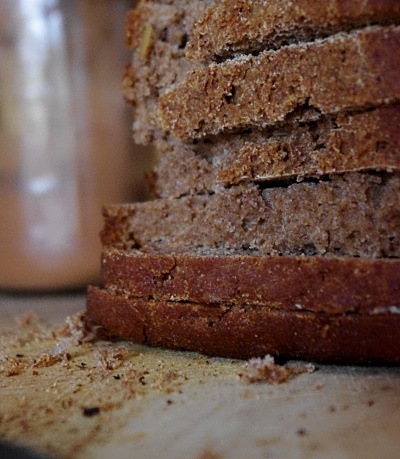
Bread is such a divisive thing these days. What once was considered the staff of life is now either a wonder food or a wicked indulgence. I’ve been on both sides of that fence and I’m happy to be back smack dab in the middle where bellies need to be filled, bodies need to be nourished, and bread can be useful for both of these things.
But… um… half of my family doesn’t eat wheat. Fortunately bread can be made without wheat and has been by some cultures for generations. Rye, a bit of a cousin to wheat, is a good option for those who are sensitive to wheat but aren’t full-blown allergic. And when soured, rye bread becomes nourishing and filling and beautifully rustic.
Rye is most certainly difficult to handle if you’ve only ever baked with wheat. Enter the lovely book Home Baked by Hanne Risgaard. The great folks at Chelsea Green publishing sent me a copy just in time for my first experiments in baking with rye.

Hanne Risgaard knows bread. She owns an organic farm in Denmark where they grow, mill, and bake with their homegrown grains. With her experience she shares recipes for all types of baked goods made with various flours including wheat, rye, spelt, and barley in Home Baked.
The tagline of the book, "Nordic recipes and techniques for organic bread and pastry" only paints a partial picture of this lovely collection of recipes. Yes, the book is beautiful with striking photos accompanying each recipe. But it is also rich in tradition as it pulls recipes from her native Denmark and weaves them together with traditional bread preparations.
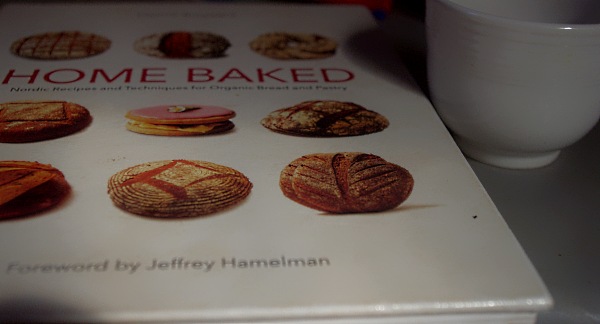
Risgaard shares 75 recipes for baking with all types of leavening – commercial yeast, sourdough, sponge/poolish, baking powder, and no leavening at all. It seems to me after reading through this book that a love of traditional bread preparation through sourdough and its nearest cousins is a big part of what she does.
When discussing the various forms of "sponge" baking, also known as a poolish or biga, Risgaard mentions that these forms of baking with commercial yeast were developed because a quick-rising yeast bread lacked the flavor and texture that the sourdough process imparts. So these soaked yeast starter methods were developed in order to bring back the glory of what was once the only means of leavening bread – sourdough.
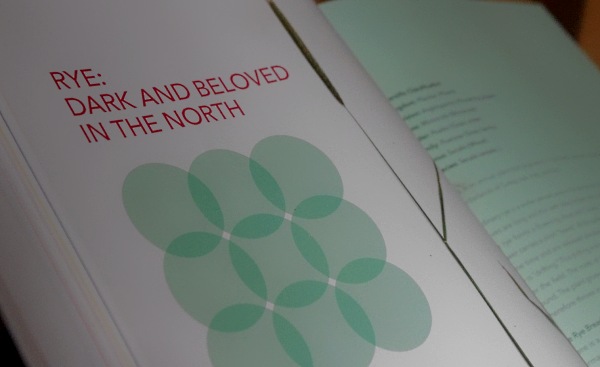
As I thumbed through the book I found techniques on working with dough that I had never heard, especially in working with alternative grains. It turns out that making this rye bread was nothing like the firm dough kneading that I had done so many times with wheat breads. With a few tips from Home Baked and this recipe I was able to create a loaf of rye bread, well three actually, that our whole family could come together around and eat with no tummy aches and no regrets.
Just a simple, beautiful, nourishing loaf that has become our daily bread.
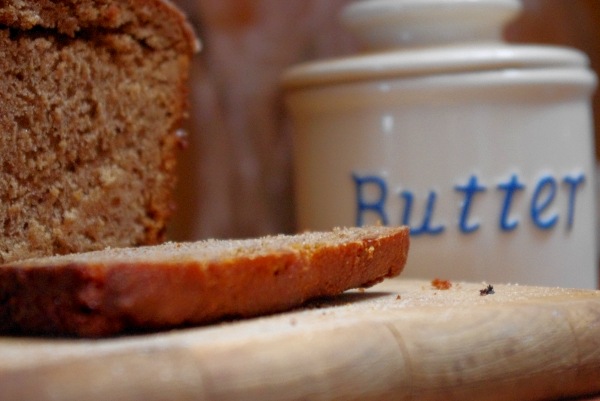
Pumpkin Seed Bread with Buttermilk
from Home Baked
Note: I made a few substitutions to use only what I had on hand, including using all rye flour and kefir instead of buttermilk, but I am posting the original recipe as is. If you’ve never baked by weight before don’t panic. Baking by weight is actually a lot more accurate in terms of measurement. But, if your kitchen scale is missing after a cross-country move (or you simply don’t have one), then try this handy converter for conversions.
Dough:
- 400 grams rye sourdough
- 625 grams whole-rye flour
- 375 grams whole-wheat flour
- 50 grams cracked rye grains
- 125 grams pumpkin seeds
- Approximately 500 grams buttermilk
- Approximately 375 grams water
- Approximately 1 tablespoon honey
- 10 grams malt flour
- 25 grams salt
For Brushing: Melted butter
Decoration: Pumpkin seeds
- Blend all the ingredients, then mix with a mixer (or your hands) for 10 minutes. the dough should have the consistency of a soft and sticky porridge. Take 400 grams of the duogh and place it into an airtight container. Sprinkle a little salt onto it before putting the lid on, then place it into the fridge for the next time you want to make rye bread. Scoop the rest of the dough into the 1-gallon (3-liter) rye bread pan. Let it rest at room temperature for 12 to 24 hours, or until the dough almost reaches the top of the pan.
- Preheat oven to 355 degrees F.
- Brush the loaf with a little melted butter. Decorate with pumpkin seeds, and bake it for approximately 1 1/2 hours.
- You can also use paper muffin cups, to bake delicious mini-loaves. Then the baking time is approximately 1 hour.


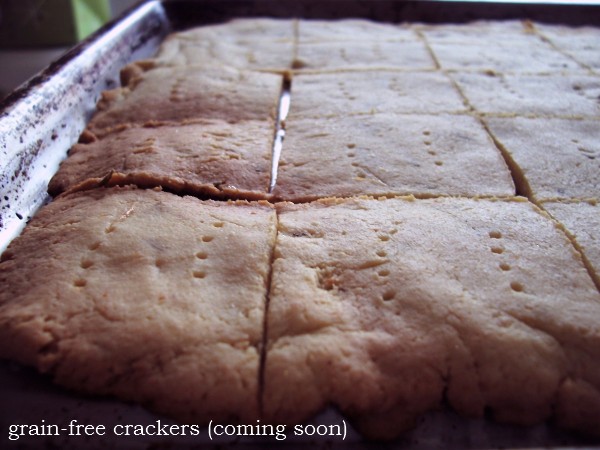
Um…. not a scientist! Sorry, but this sounds very complex – not something I would even have the urge to try. With my typical American brain, the metrics are totally off-putting. The number of ingredients for a bread also puts me off. And, where the heck would I find rye sourdough? And malt flour? Doesn’t sound worth the trouble.
Thank you for sharing. We actually have a local source of rye and I would love to try this.
Dear Shannon,
I so enjoy your stories from your wonderful piece of “heaven”. And this bread sounds scrumptious. I just had to add a silly. If you still have a few rye seeds hanging around, you might think of sprouting them for the chickens. My chickens think sprouted grains (wheat, rye, buckwheat, kamut) are “chicken candy”. They literally jump up and knock them out of a light dish I hold above them. A very bad Las Vegas act, and always good for a laugh!!!
Jemma – I do have rye berries around and should try that. Thanks!
Interesting book. I’d like to get back into bread baking (gluten free, unfortunately). I’ll have to check it out. Thanks for sharing!
Can you tell me a little about starting a rye sourdough starter? I’d love to try this bread, but am not sure where to start. 🙂 Can I just mix rye flour and apple water kefir like I do for my “fast cheater sourdough”? Does rye flour in sourdough work similarly to other sourdoughs? 🙂 Thanks so much!!
Hi Chara,
Rye sourdough is just like a wheat sourdough in that it contains yeasts, lactic and acetic acids, and strains of beneficial bacteria. The only difference is that it is made with rye flour which means that a wheat sourdough starter would work just as well.
Since my sourdough is off and on I actually substitute some kefir and 1/2 – 3/4 teaspoons of commercial yeast right now. It’s not ideal, but neither is most of our life right now :).
Otherwise, I would substitute any sourdough in equal amounts or the amount of kefir that you would normally sub for that much sourdough.
Also, I always use kefir instead of buttermilk since I make it every day.
Let me know if you try it!
Shannon
Would you be willing to type out the recipe as you do it? I would really like to try it:) Thanks!
Angelia – Will be doing this soon. Thanks!
I am on a very restrictive diet right now and can’t have dairy. I also can’t have nuts. Can I use something like water and coconut oil as a substitute for milk/kefir? What would you do?